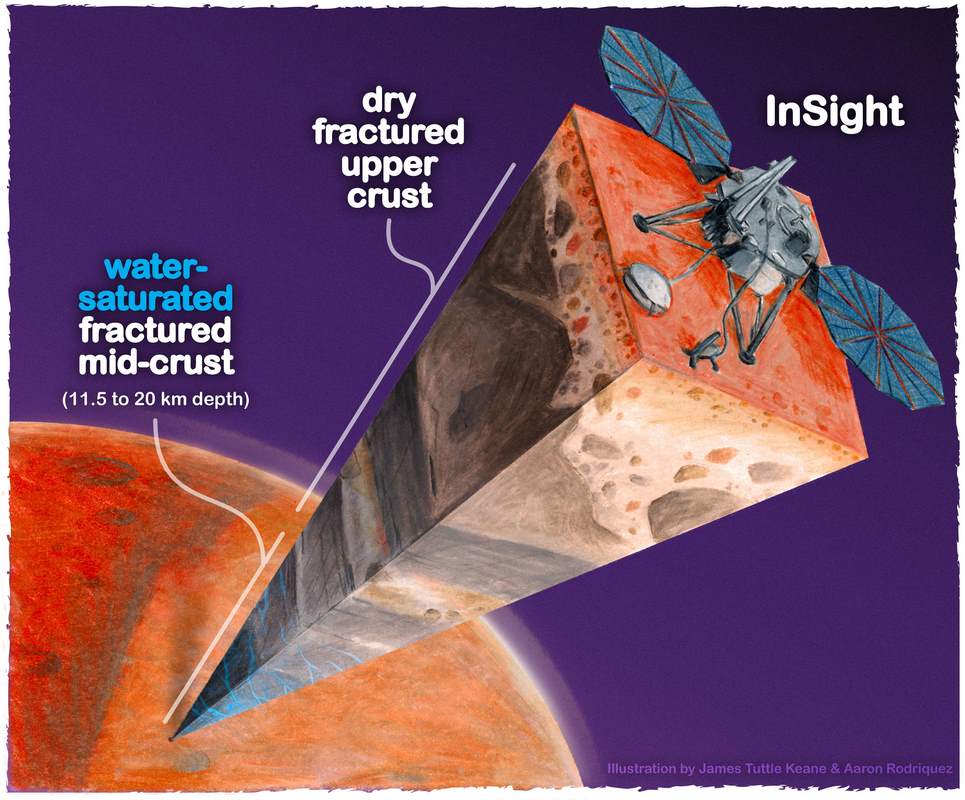Hold your breath, space enthusiasts! We’re about to dive headlong into an exhilarating revelation that could change our understanding of life beyond Earth. Strap in, as we unravel the enigma of the Red Planet’s missing water.

Why is this so thrilling? Because this buried water could finally help us determine if the Mars, once awash with rivers and lakes, ever hosted or still shelters microbial life. But there’s a catch – this water lies approximately 12 miles (20 kilometers) beneath the Martian surface, a depth we’ve yet to conquer even on our home planet.
The seismic data from NASA’s Insight Lander suggests an underworld of porous rock brimming with enough water to create a one-mile-deep ocean covering the entirety of Mars. This is monumental because it has long been known that Mars lost its oceans over three billion years ago.
“To understand the evolution of Mars’ climate, surface, and interior, we must first unravel its water cycle,” asserts Dr. Vashan Wright from UC San Diego’s Scripps Institution of Oceanography.
Wright and his team used a mathematical model akin to those employed on Earth to map underground aquifers and oil fields. Their conclusion? The seismic data from Insight can best be explained by a deep layer of fractured igneous rock saturated with liquid water.
“Establishing the existence of this massive liquid water reservoir provides insight into what Mars’ climate was like or could be like,” adds study co-author Professor Michael Manga, of UC Berkeley.
Mars’ past is written in its river channels, deltas, lake deposits, and water-altered rocks. But that wet period ended abruptly over three billion years ago when Mars lost its atmosphere. Since then, scientists have sent probes and landers to Mars to find out what happened to all that water.
The new findings suggest that much of the water didn’t escape into space but instead seeped into the crust. This discovery opens up exciting possibilities for life on Mars.
“Why couldn’t this underground reservoir be a habitable environment? Deep mines and ocean bottoms host life on Earth,” says Wright. “While we haven’t found any evidence for life on Mars yet, we’ve at least identified a place that should, in principle, sustain life.”
So there you have it: a potential Martian oasis hidden beneath the surface. Even though NASA’s Insight Lander has officially “signed off” due to power shortages, the data it gathered continues to fuel our quest for understanding. And who knows, this might just be the key to unlocking the secrets of life beyond Earth.
So, go ahead and share this Martian insight from the Insight Lander…
Source: Good News Network





Leave a Comment